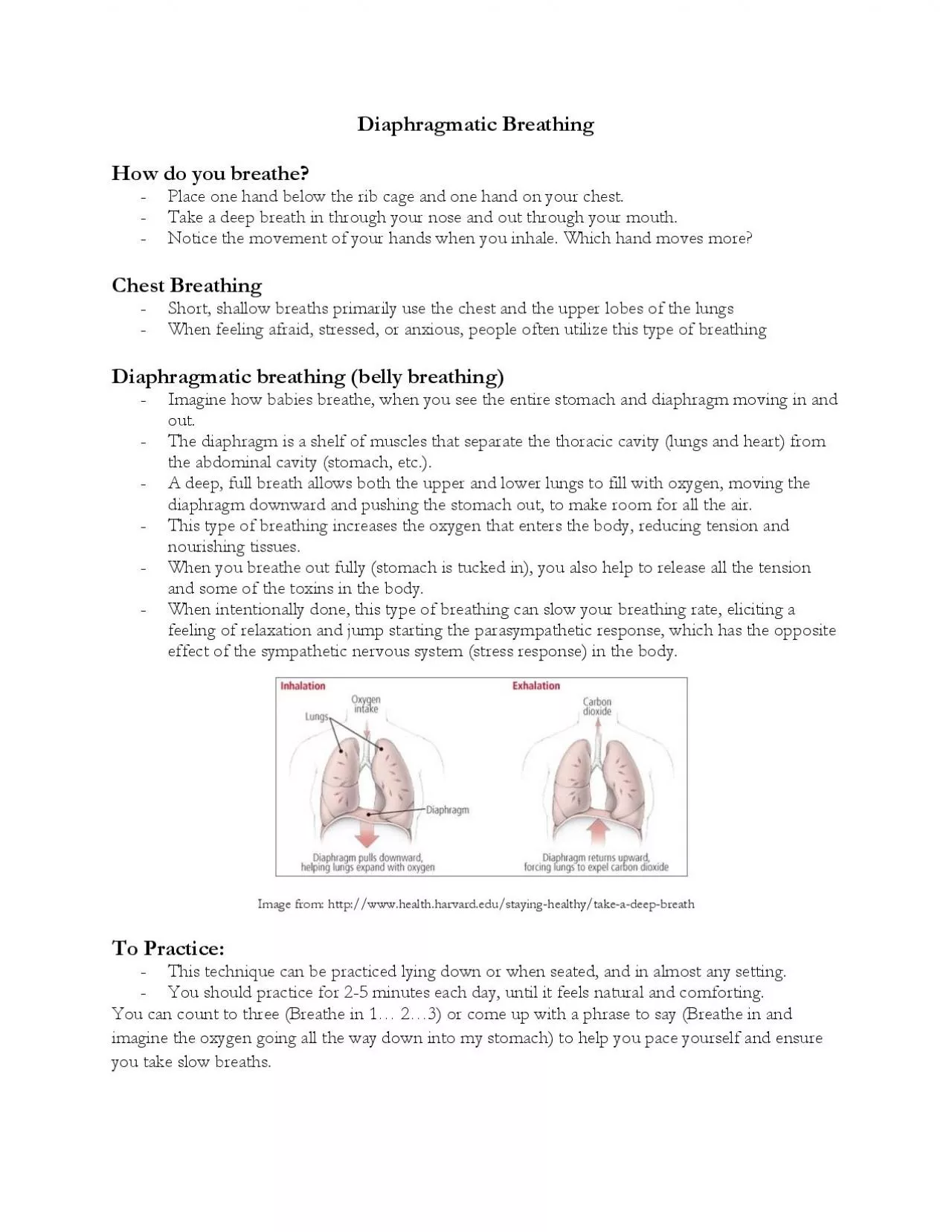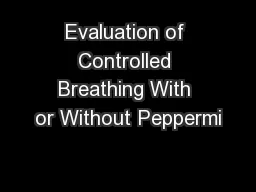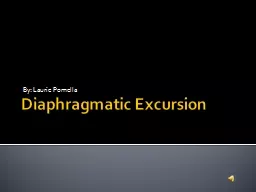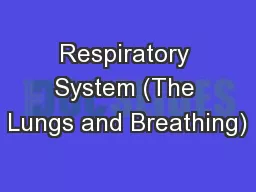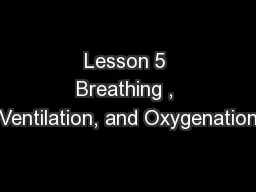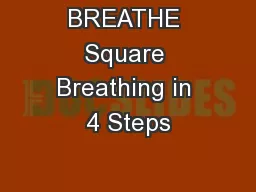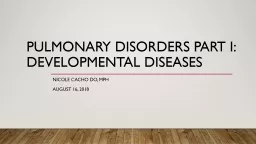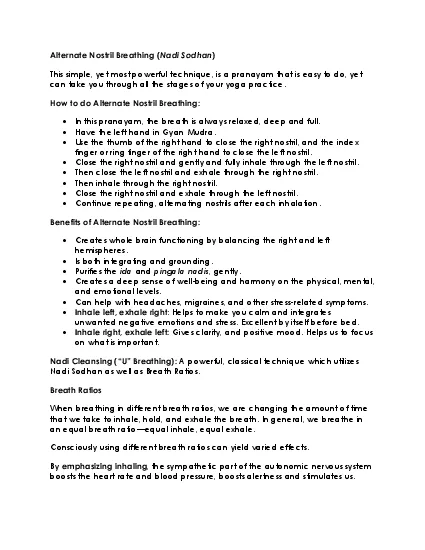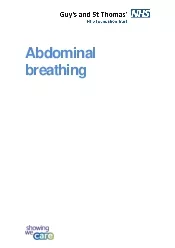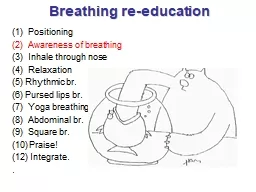PDF-Diaphragmatic Breathing
Author : osullivan | Published Date : 2022-08-19
How do you breathe Place one hand below the rib cage and one hand on your chest Take a deep breath in through your nose and out through your mouth Notice the
Presentation Embed Code
Download Presentation
Download Presentation The PPT/PDF document "Diaphragmatic Breathing" is the property of its rightful owner. Permission is granted to download and print the materials on this website for personal, non-commercial use only, and to display it on your personal computer provided you do not modify the materials and that you retain all copyright notices contained in the materials. By downloading content from our website, you accept the terms of this agreement.
Diaphragmatic Breathing: Transcript
Download Rules Of Document
"Diaphragmatic Breathing"The content belongs to its owner. You may download and print it for personal use, without modification, and keep all copyright notices. By downloading, you agree to these terms.
Related Documents

